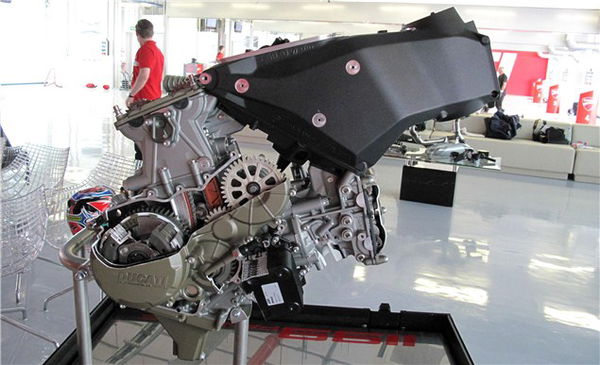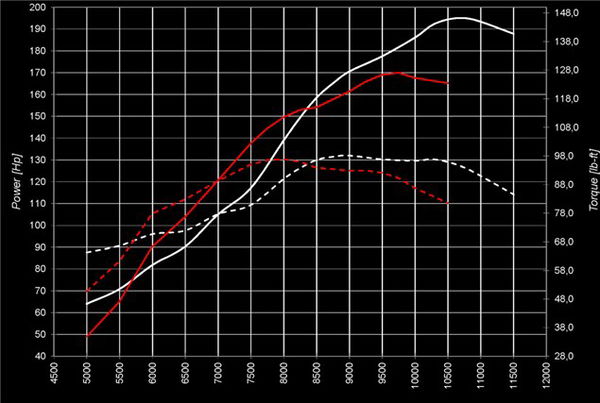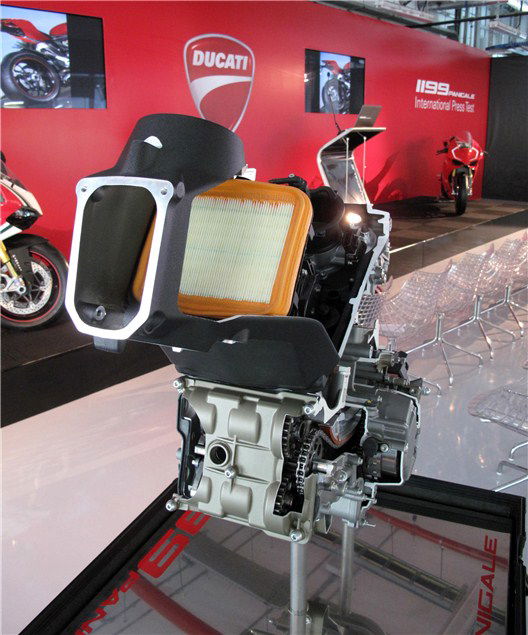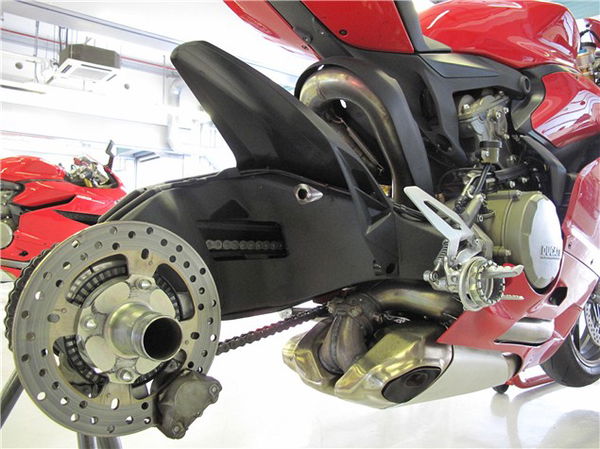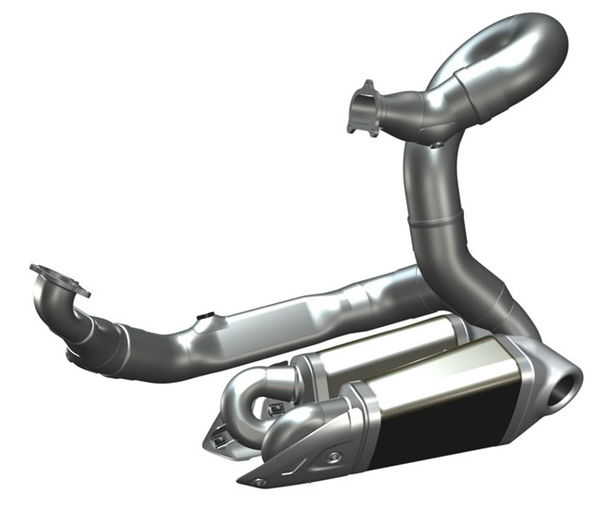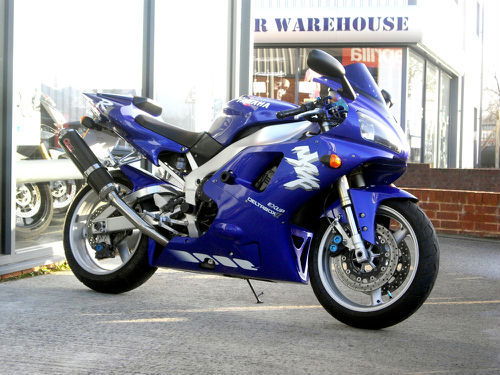Technically speaking: Ducati's 1199 Panigale
A look at the technology behind Ducati's ground-breaking new superbike
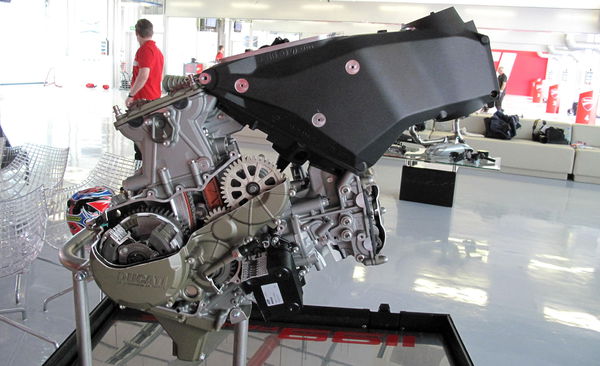
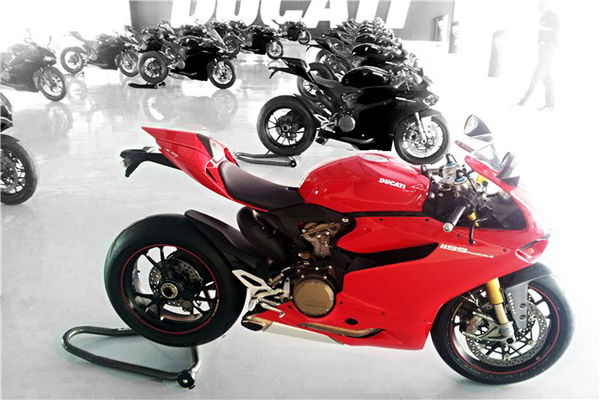
Is the Panigale just another superbike with a fancy new chassis? Well no actually, far from it.
Ducati claim that the Panigale is their single biggest investment in any new model. From a company that believes in sportsbikes, that's not to be sniffed at.
Packed with a host of changes and clever new additions that all add-up to make a phenomenal bike, one that really changes your perception of v-twins, Ducatis and electronics. Let's take a look.
At the heart of the Panigale is an 1199cc v-twin called the Superquadro because of its oversquare bore to stroke ratio. The 112mm bore is huge, up from 106mm on the 1198, while the stroke is down to 60.8mm from 67.9mm. It's still Ducati's trademark 90° L-twin but the engine has been rotated back six degrees to allow it to be positioned closer to the front wheel and with it, adjust the weight bias. The crankcases are vacuum die-cast and some engine casing parts are made from magnesium alloy to further reduce weight.
The double-ribbed pistons feature RR58 alloy (the main structural material used in Concorde). The lightweight pistons travel in Nikasil-coated aluminium bores; at setup similar to that used by the Ducati MotoGP team. The gerotor oil pump was also developed on the Ducati's MotoGP Desmosedici; it's efficient and creates a vacuum which reduces atmospheric pressure on the down stroke, helping the Panigale reach its 11,500rpm rev ceiling - unthinkable for a large capacity v-twin five years ago.
Ducati have ditched the belt driven cams, instead opting for a chain and gear-driven system. The valves are larger but weight is kept to a minimum thanks to that fancy metal called titanium. However, their size, coupled with the higher rev-ceiling means a chain and gear-driven system provides the reliability this engine needs.
The engine acts as a fully-stressed member of the bike's chassis. The monocoque itself is tiny, weighing just 4.2kg. The chassis features an integrated airbox and houses two throttle bodies, each with twin-injectors. You have to see it to believe it.
Weight saving is everywhere. The designers have even fitted an ingenious automatic decompressor, which makes the massive v-twin easier to start, meaning a smaller battery can be used. The result? A 3.5kg weight saving. Told you it was clever.
The fuel-tank is 1.7kg lighter than that of the 1198, due in part to it being made from aluminium. It's also larger in capacity too, up from 15.5L to 17L.
The gearbox is all-new too, redesigned to increase the dimension of the gearbox shafts, enabling larger, stronger gears. If Ducatis had a small weakspot in the past, it was the gearbox, which would sometimes throw up the occasional false-neutral in higher gears. This is no longer the case. Seriously, this gearbox is slick, tight and precise.
The clutch features a servo mechanism to push the clutch plates together when under drive, it also makes the clutch lever action artificially lighter, which suits most people better.
The 1198's weight was distributed evenly front and rear however the 1199 Panigale has a 52% Front and 48% Rear weight distribution, which Ducati claim minimizes weight transfer and aids stability. It's certainly stable at the front end, especially under braking.
The rear subframe is aluminium too, weighing just 2.1kg. The rider's seat is 30mm further forward, while the bars are 10mm higher and set wider. The Panigale is not a cramped superbike. I'm 5'11" and had plenty of room, especially the reach to the footpegs.
The standard Panigale uses 50mm Marzocchi pressurised forks. Ducati and Marzocchi have worked together to develop the forks, which use less oil and smaller components. They weigh 6.7kg, representing a 1kg weight saving. You might be surprised to know that the 43mm Öhlins forks used on the S and S Tricolore models weigh around 1kg more than the Marzocchi forks. This is partly down to the fact the Öhlins forks are electronically adjustable. They're adjusted using preset rider modes or you can set and save your own setup. Look out!
The standard model features a Sachs fully-adjustable rear shock, the Panigale S uses an electonically adjustable Öhlins TTX36 unit. The Öhlins was sublime, but we didn't get to ride the Marzocchi and Sachs combo on the standard model. However, I've ridden Ducatis with Sachs and Marzocchi and they offer great feedback.
The front brake discs are 330mm, 10mm larger than the 320mm norm. They're set 15mm wider than before too, meaning they sit proud of the front tyre, in the airflow, which enables them greater cooling efficiency. The Brembo monobloc calipers have been developed for the Panigale and are 7% lighter than the 1198SP's Brembo monoblocs. They also closely resemble the brakes used on MotoGP bikes, with a slimmer profile. The weight difference isn't anything anyone would notice but the feel and power is nothing short of remarkable.
The wheels vary between Panigale and Panigale S models. The base version uses 10-spoke rims, the rear is a massive 6-inches and total weight is down 500g on the 1198s wheels. The Panigale S features three-spoke forged Marchesini wheels, which are another 400g lighter still. Every Panigale uses Pirelli Diablo Supercorsa SP tyres, with the rear being a huge 200/55 profile - the widest tyre ever fitted to a Ducati superbike. The higher profile rear tyre is designed to increase the tyre's contact patch at lean and the speed at which the bike can flick from side to side.
The swingarm is 39mm longer than that of the 1198 but wheelbase is only up 7mm to 1437mm. This steering is anything but slow. Sharp but not flighty.
The all-new TFT display has the quality of an iPhone screen. It features everything you'd expect: speed, revs, gear position, coolant temp, ODO and also what riding mode you're in, traction setting, and whether EBC, DQS and ABS are set. When you switch to Race mode the speed, which is usually the main focus on the dash is replaced by a lap timer.
If you want to know about DQS, EBC, DDA and more, click here to read about the Ducati Panigale's electronics package. Variants of it are bound to make it to your next bike in the near future..
